Introduction
For commercial property owners, the integrity of an asphalt parking lot is paramount to ensuring the safety and satisfaction of its users. However, a common challenge that can compromise this integrity is the presence of a non-load-bearing subbase, which often leads to premature pavement failure.
Understanding how to identify and address this issue is critical in maintaining a durable and reliable parking lot. This article outlines the steps to uncover non-load bearing subbase issues and remediate them during the asphalt milling process before paving. Most new construction projects in New Jersey have parking lots built upon clay-based subgrade. During construction and when the subbase is constantly introduced to rainwater or when the asphalt begins to crack and water penetrates below the asphalt, it becomes trapped between the subgrade and the asphalt and creates a non-load-bearing subgrade.
Clay soils are known for their fine particles and high water retention capacity, which can lead to water saturation beneath the asphalt layer. This saturation is problematic because when clay absorbs water, it expands, and as it dries, it contracts. This cycle of expansion and contraction can create uneven surfaces, leading to cracks and potholes in the asphalt layer above.
Water saturation in clay subgrades compromises the sub-base's load-bearing capacity. Under normal conditions, the sub base acts as a stable foundation, distributing the load of vehicles evenly across the parking lot. However, when clay subgrades become saturated with water, they can become soft and lose their ability to support weight. This can lead to the asphalt layer sinking or forming depressions, making the parking lot unsafe for vehicles and pedestrians alike. Additionally, during freezing temperatures, the water trapped within the clay can freeze and expand, exacerbating the damage to the asphalt surface.
The Importance of a Solid Subbase For Your New Jersey Parking Lot
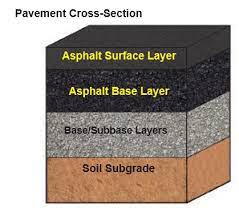
What is a Subbase? The subbase is the layer of material beneath the asphalt surface and base layer, providing a stable foundation for the pavement. Its primary role is to distribute the load evenly, preventing the asphalt from sinking or cracking under the weight of vehicles.
Consequences of a Non-Load Bearing Subbase A non-load bearing subbase lacks the strength and stability to support the asphalt and vehicular loads, leading to issues such as potholes, cracks, and uneven surfaces. These not only pose safety risks but also result in higher maintenance costs.
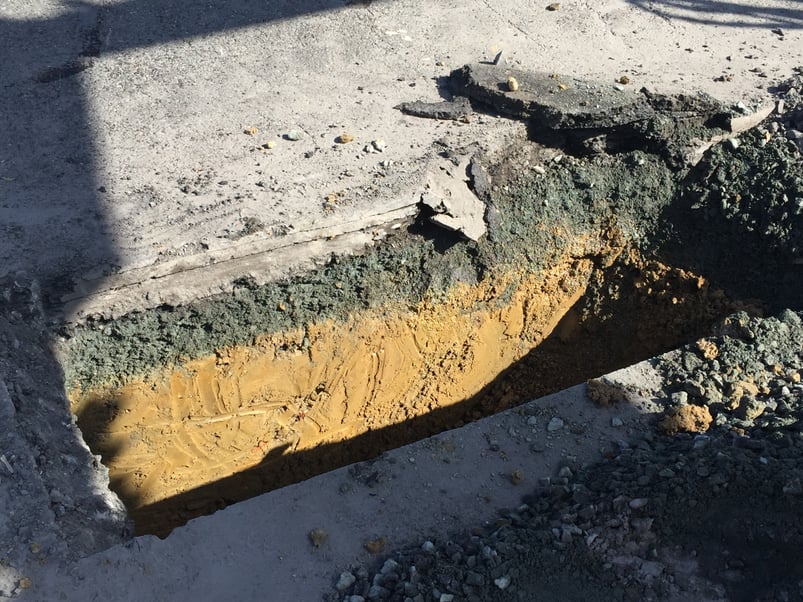
This is an actual parking lot example that mirrors the same design as the cut sheet above. There are two asphalt layers in place, which are approximately 6 inches thick total, which is on top of 6-inch graded stone, and a clay, subgrade. You can see from the yellow clay, how smooth it is and does not allow water to penetrate through it for drainage. In the picture above, we were doing a test to locate a source of underground water to install an underdrain system to prevent the water from continuing to come through the top of the parking lot and create a liability with ice during the winter and moss during the summer.
Identifying Non-Load Bearing Subbase Issues
How To Identify Non-Load-Bearing Subgrade:
-
Visual Inspection Regularly inspect the parking lot for signs of distress, such as extensive cracking, potholes, and areas where water pools. These can indicate underlying subbase problems.
-
Professional Assessment Engaging a pavement professional to conduct a thorough evaluation, including core sampling and ground penetrating radar (GPR) scans, can accurately diagnose subbase issues.
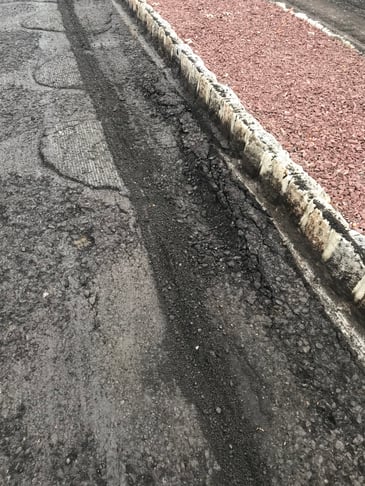 Most issues are discovered during the asphalt milling process. At this time the asphalt is subjected to both an asphalt milling machine and a tri-axle dump truck, which both weigh over 80,000 pounds each. During this time you will begin to see the reflection in the asphalt and can watch the asphalt move up and down similar to a wave, which is an indication that the subgrade and sub-base are no longer loadbearing.
Most issues are discovered during the asphalt milling process. At this time the asphalt is subjected to both an asphalt milling machine and a tri-axle dump truck, which both weigh over 80,000 pounds each. During this time you will begin to see the reflection in the asphalt and can watch the asphalt move up and down similar to a wave, which is an indication that the subgrade and sub-base are no longer loadbearing.
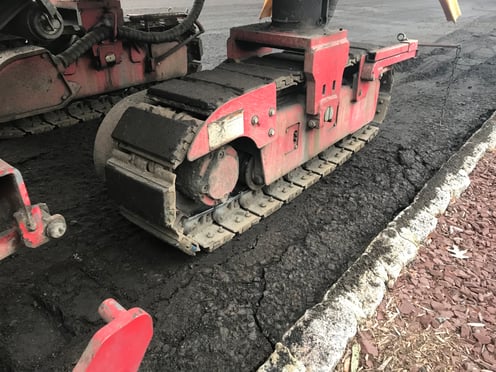
How To Correct A Non-Load-Bearing Subbase/Subgrade: Remediation During Asphalt Milling
-
Asphalt Milling Process
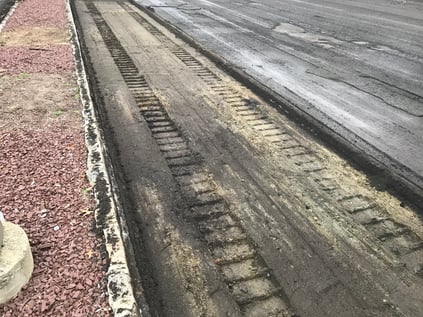
Asphalt milling involves removing the top layer of the asphalt to set a new surface layer including the base if specified. It provides an opportunity to access and address subbase issues before repaving.
-
Subbase Evaluation
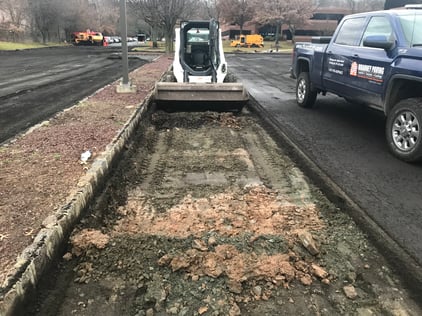
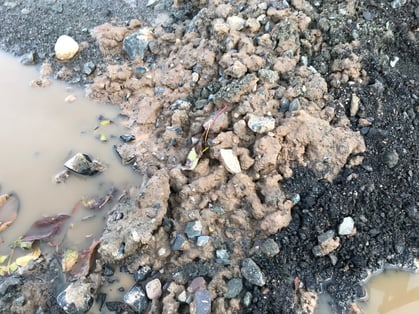
Once the asphalt layer is milled away, evaluate the exposed subbase material for signs of instability or inadequacy. Look for loose materials, voids, or water along with the presence of clay. Outside the Coastal Plain of New Jersey where the subgrade is mainly sandy soils that adequately drain, the remainder of New Jersey has both yellow / green clay and red shale. Both clay and shale drain very poorly. This is the main reason why an asphalt parking lot in the coastal plain in New Jersey can commonly last 30 to 40 years while a parking lot in central or northern New Jersey built on top of clay can require milling and paving 10 years after Construction.
-
Material Removal
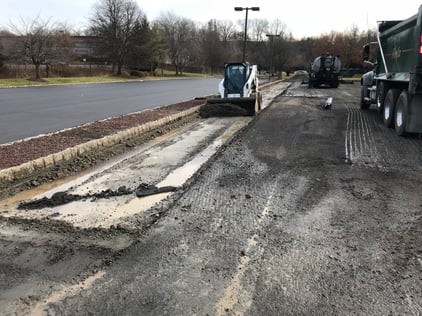
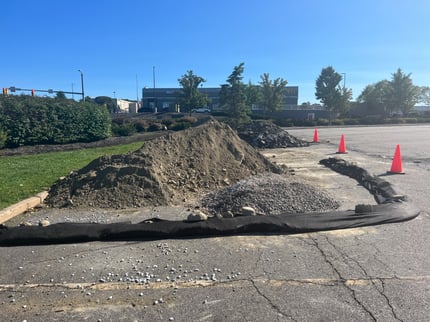
Remove any non-load-bearing material from the subbase. This may involve excavating down to a stable layer of soil or to the depth where solid, load-bearing material is found. Keep in mind at times this can be a logistical challenge. In the state of New Jersey, most locations that will except fill materials such as this require environmental testing to make sure there are no contaminants present in the material. If this is the case, it could substantially slow the project down, or a stockpile location may be required on-site to stockpile material for testing and remove a little later date. In addition, if you're stockpiling material on site, it will require stormwater protection in your catch basins and surrounding the piles to prevent fines from washing out.
-
Improving Drainage
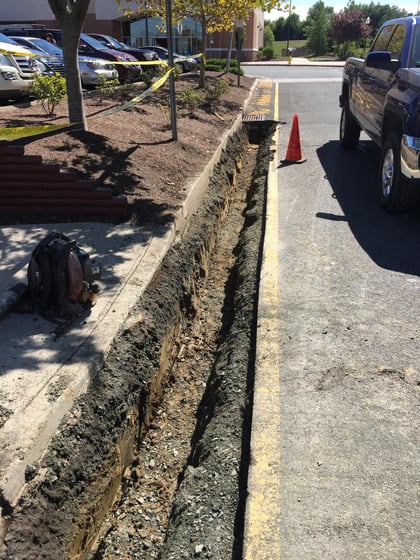
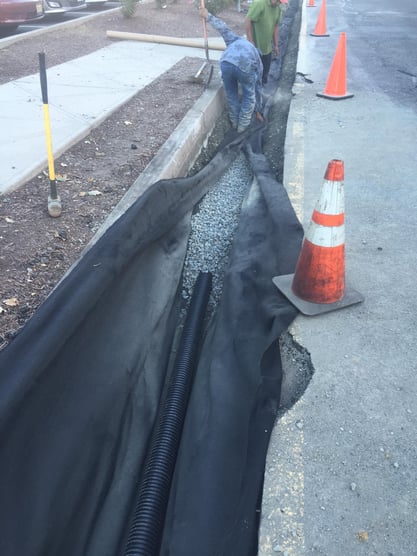
Ensure proper drainage to prevent water from weakening the subbase. This may include installing drains or adjusting the slope to facilitate water runoff. Installing an underdrain under an asphalt parking lot that is built on top of clay or shale is one of the most beneficial drainage systems. You can have it under a parking lot yet it is rarely used due to the cost. However, if you take into consideration, installing underdrain under a parking lot that has a poorly draining subgrade taking into consideration the fact the parking lot would last 20 to 25 years before requiring reconstruction; the cost would be far less than having to reconstruct the parking lot and replace the water-saturated subgrade.
-
Adding Stabilizing Materials
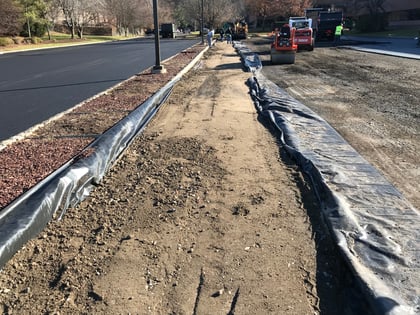
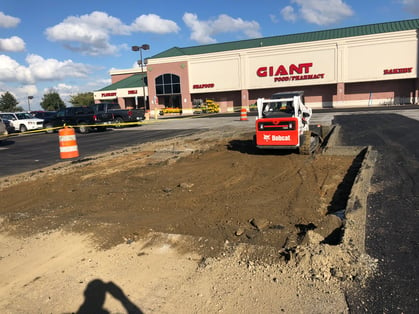
Introduce stabilizing materials such as stabilization geotextiles and recycled aggregates to enhance the subbase's load-bearing capacity. These materials help distribute loads and prevent deformation. For environmental reasons, recycled aggregates should be used in place of virgin aggregate at any opportunity possible.
-
Compaction & Proofrolling
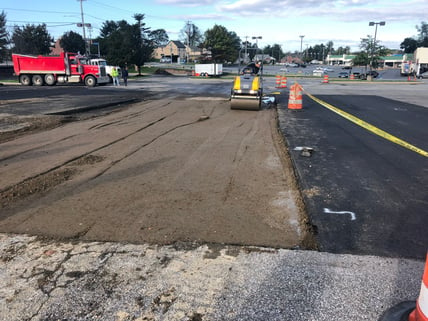
Compact the newly added materials to create a dense, stable subbase. Proper compaction is crucial to prevent settling and future pavement issues. Proofroll with a loaded tri-axle dup truck to make sure there is no vertical movement of the compacted material.
Improving Drainage Solutions for Clay Subgrades: Boosting the Longevity of New Jersey Asphalt Parking Lots Through Subsurface Drainage Systems:
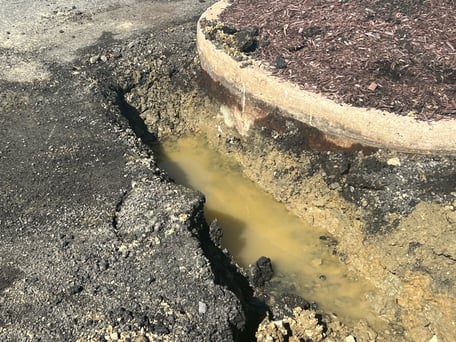
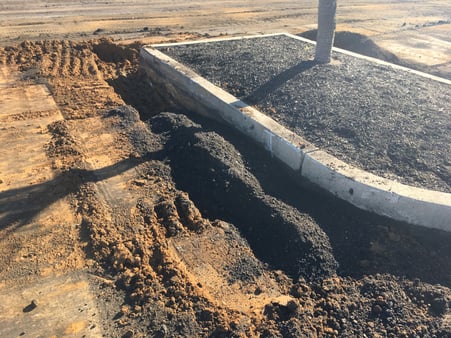
Because landscape islands are permeable, they are a source of water infiltration to lead directly to the parking lot subgrade. The water then becomes trapped between the clay subgrade and the asphalt and wreaks havoc during the freeze-thaw cycle in New Jersey.
Identifying issues of water saturation in the clay subgrades of asphalt parking lots in New Jersey is best undertaken before milling and paving starts. In New Jersey, the presence of clay in subgrades can significantly affect the durability and structural integrity of asphalt parking lots. To mitigate these issues, the installation of an underdrain system can be highly effective. An underdrain system provides a pathway for underground water to drain out from the subbase, preventing water saturation of the clay subgrade. This system typically involves laying perforated pipes along the parking lot's perimeter or beneath its surface, which are then covered with a layer of gravel or another permeable material. The perforated pipes collect excess water from the subgrade and channel it away from the parking lot, reducing the risk of water retention and the associated expansion and contraction of the clay.
Implementing an underdrain system requires careful planning and consideration of the local soil conditions, water table level, and the expected load on the parking lot. Proper installation ensures that water is efficiently removed from the sub-base, maintaining the structural integrity of the asphalt surface and extending the lifespan of the parking lot. This proactive approach not only prevents potential damage but also reduces the need for costly repairs and maintenance in the future.
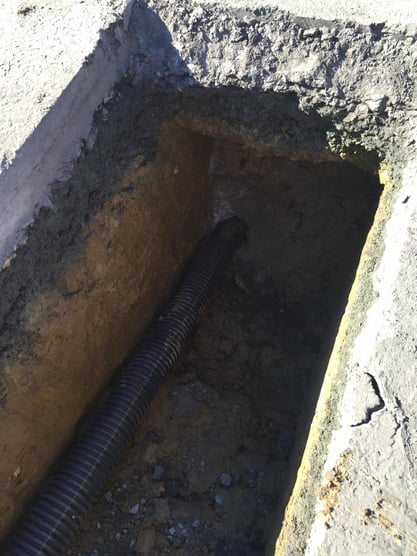
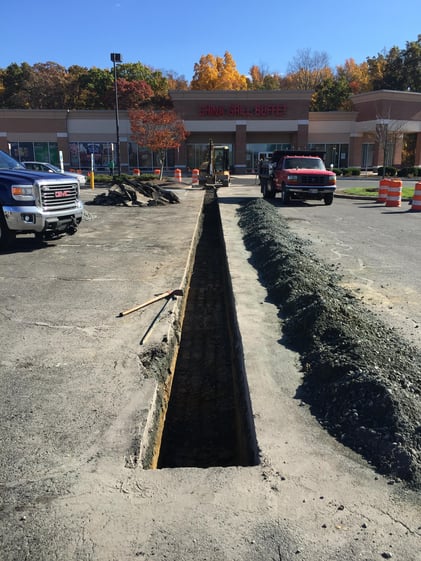
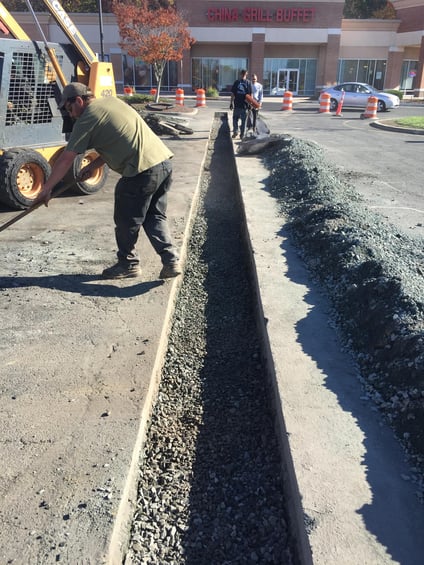
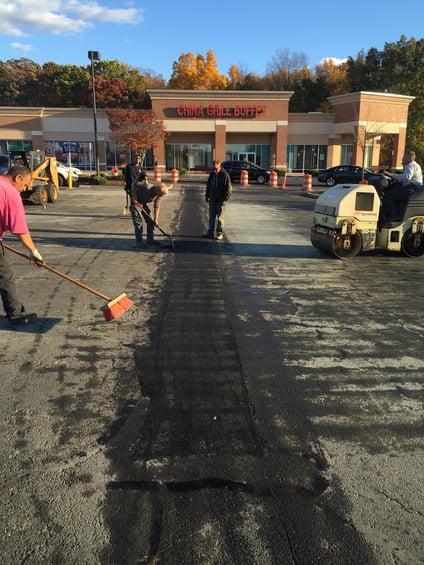
In addition to water saturation around landscape islands, hydrostatic pressure can force groundwater to the surface in any section of your New Jersey asphalt parking lot. It's important to follow the underdrain installation steps in any location in the parking lot where groundwater is coming to the surface. These areas are best corrected prior to starting asphalt milling.
Conclusion
Identifying and remedying non-load-bearing subbase issues are critical steps in ensuring the longevity and safety of your asphalt parking lot. By following the outlined steps during the asphalt milling process, commercial property owners can significantly improve the stability and durability of their parking lot pavements. Investing in proper subbase preparation and maintenance not only saves on future repair costs but also enhances the property's value and appeal.
IMPORTANT
I cannot stress enough how important a parking lot subsurface inspection is best completed by a New Jersey asphalt paving expert before work starts! Identifying drainage issues, and areas of poor subgrade is best completed by planning before starting the work so arrangements can be made to dispose of the non-loadbearing material and bring in new materials to strengthen the area.





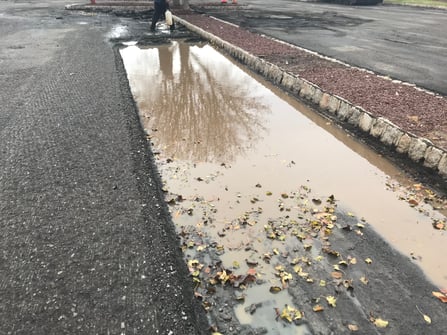






Leave a Comment